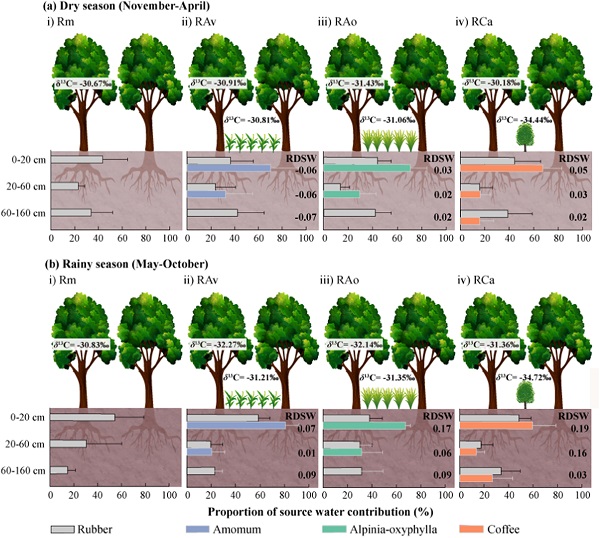The rubber-based agroforestry systems have been recently established to provide a promising solution for the sustainable development of rubber cultivation. However, the water relations between rubber trees and the intercrops remain poorly understood.
In a study published in Agricultural Water Management, researchers from the Xishuangbanna Tropical Botanical Garden (XTBG) tried to characterize the water relations between rubber trees and the intercrops through both spatial (vertical pattern) and temporal (seasonal pattern) scales.
The researchers evaluated the influences of three cash intercrops, namely two herbaceous plants (Amomum villosum and Alpinia oxyphylla) and a woody beverage (Coffea arabica), on rubber water utilization.
They investigated the plant water-absorption dynamics, root biomass, and intrinsic water use efficiency throughout a whole year (2017–2018).
Rubber trees exhibited a weak plasticity in the depth of water uptake, relying on 0–20 cm soil water during both the dry and rainy seasons. Meanwhile, all of the intercrops exhibited interspecific competition for shallow soil water with the rubber trees.
They further found that all rubber trees maintained higher intrinsic water use efficiency during the dry season than the rainy season.
Furthermore, coffee seems to be an appropriate intercrop to rubber plantation because of its positive impacts on soil water availability. On the contrary, amomum would exacerbate the soil water shortages in the rubber plantation.
“Our findings will provide a scientific database for the reasonable selection of intercrops in the rubber-based agroforestry practices,” said Prof. LIU Wenjie, principal investigator of the study.

Read the paper: Agricultural Water Management
Article source: Chinese Academy of Sciences
Author: YANG Bin
Image credit: YANG Bin








